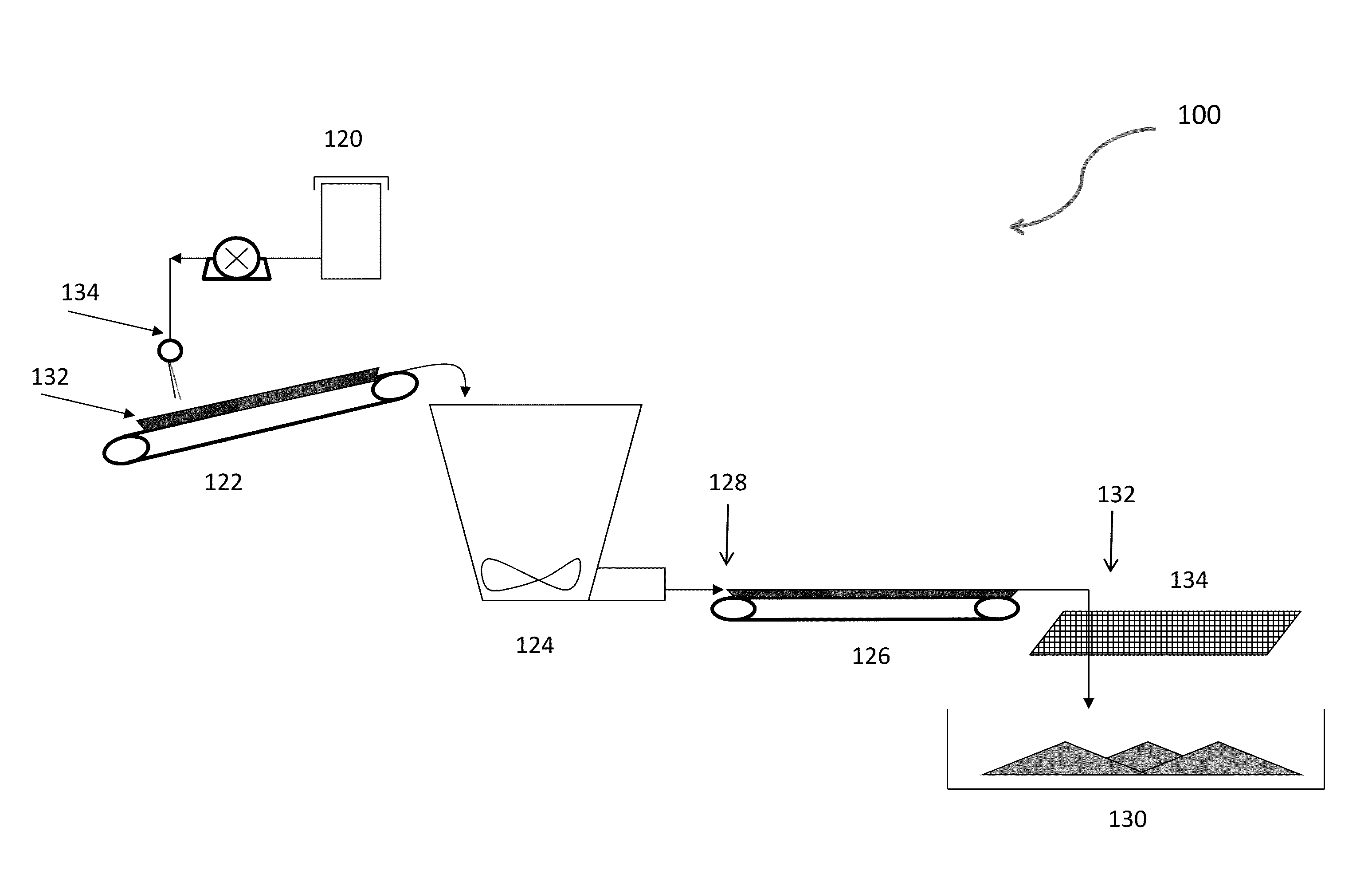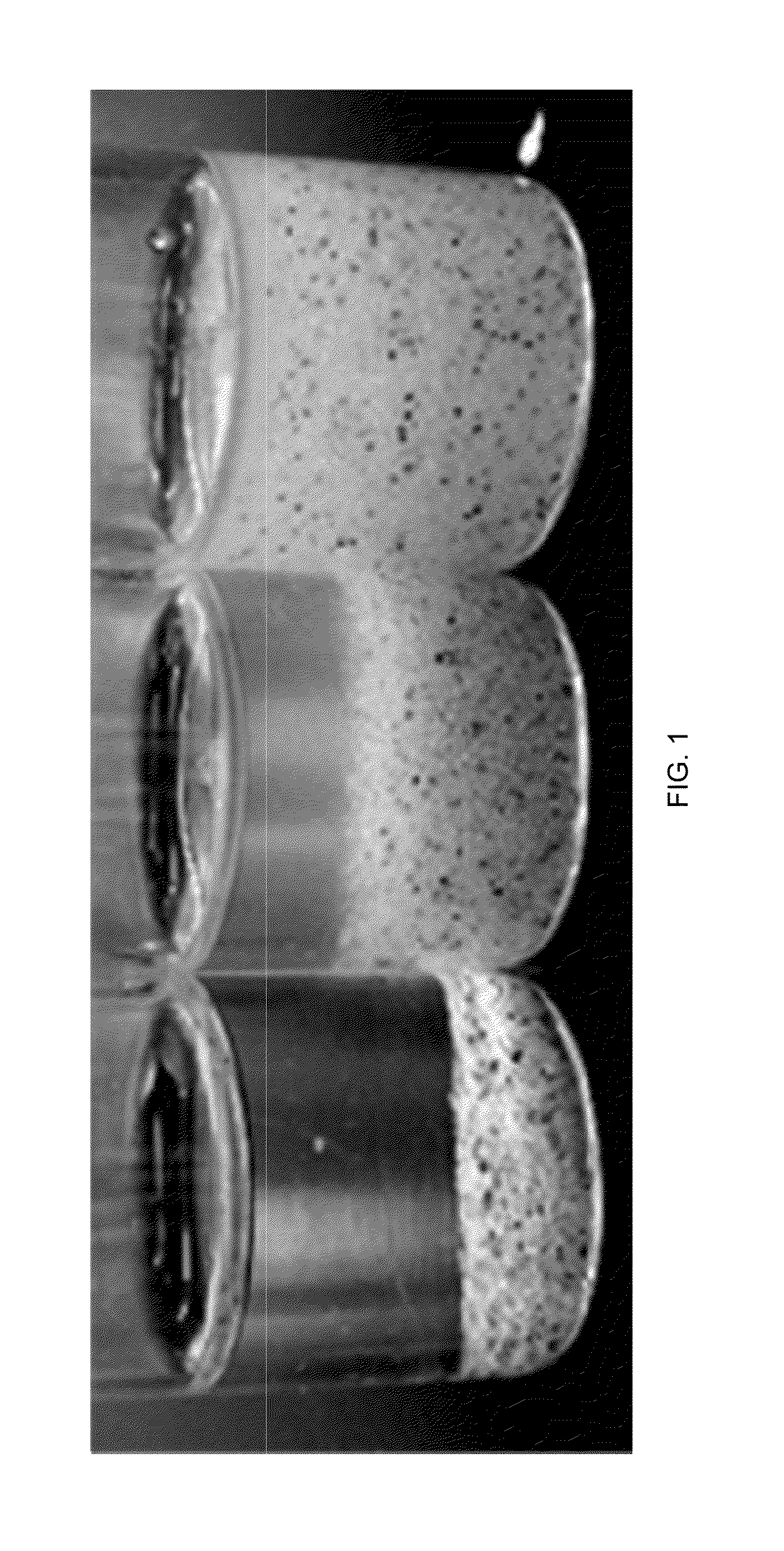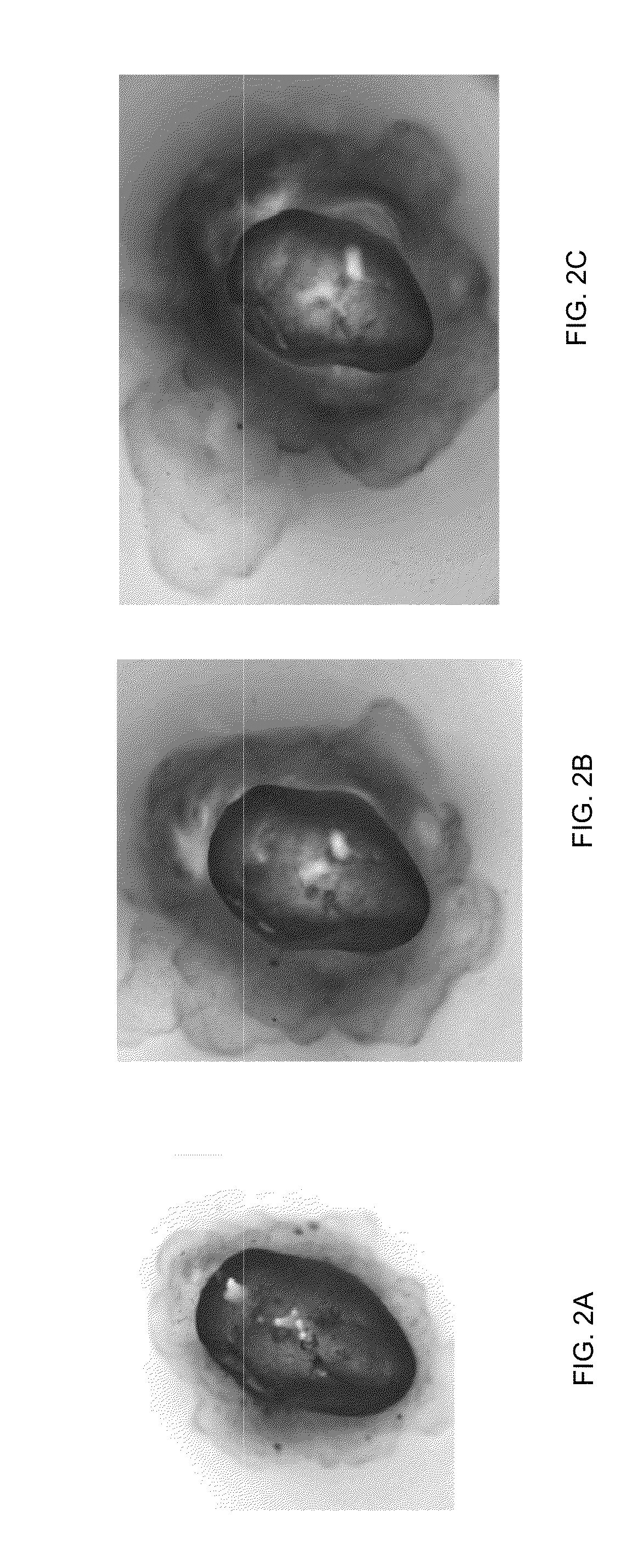Self-suspending proppants for hydraulic fracturing
a hydraulic fracturing and self-suspension technology, applied in the field of systems, formulations and methods of fracturing technologies, can solve the problems of high dose rate of expensive polymer, production equipment, and inability to highly effective viscosifiers and suspending agents, and achieve the effect of reducing the amount of thickening agents
- Summary
- Abstract
- Description
- Claims
- Application Information
AI Technical Summary
Benefits of technology
Problems solved by technology
Method used
Image
Examples
example 1
Preparation of Inner Polymer Layer
[0166]An inner polymer layer of 100 ppm concentration was prepared on a sand sample by adding 200 g 30 / 70 mesh frac sand to a FlackTek Max 100 long jar. To the sand was added 85 g tap water and 2 g of a 1% polydiallyldimethylammonium chloride (PDAC) solution. The sample was then shaken by hand for approximately 5 minutes, vacuum filtered and dried in an oven at 80° C. The sand sample was then removed from the oven and used in subsequent testing.
[0167]An identical method was used as described above to formulate a 10 ppm inner polymer layer coating with the exception being that only 0.2 g of a 1% PDAC solution were used.
[0168]An identical method was used as described above to formulate an inner polymer layer at a maximum polymer loading (“Max PDAC”) with the exception that 1 g of a 20 wt % PDAC solution was used. Following treatment the sand was washed with excess tap water, vacuum filtered and dried in an oven at 80° C. The sand sample was then remov...
example 2
Preparation of Inner Polymer Layer
[0169]An inner polymer layer of 100 ppm concentration was prepared on a sand sample by dissolving 0.2 g LPEI 500 in 10 g ethanol to form a 2% LPEI 500 solution in ethanol. To 70 g ethanol in a 250 mL round bottom flask was added 0.75 g of the 2% LPEI 500 solution. Then 150 g of 30 / 70 mesh frac sand was added to the round bottom flask. The solvent was removed using a rotary evaporator with a 65° C. water bath. The sample was then removed from the flask and used in subsequent testing.
example 3
Preparation of Outer Polymer Layer
[0170]Outer polymer layers were applied to sand samples by mixing sand with liquid Flopam EM533 polymer under different conditions. In one coating method, polymer product was added neat. In another coating method the polymer product was extended by diluting with hexane. For hexane dilution 10 g polymer was added to 10 g hexane in a 40 mL glass vial and vortex mixed until homogenous. Polymer was then added to 30 / 70 mesh frac sand samples of 30 g in FlackTek Max 100 jars. Samples were placed in a FlackTek DAC150 SpeedMixer at 2600 rpm for about 25 seconds. Samples were removed from SpeedMixer and allowed to dry in an oven at 80° C. overnight.
PUM
| Property | Measurement | Unit |
|---|---|---|
| weight average molecular weight | aaaaa | aaaaa |
| thickness | aaaaa | aaaaa |
| thickness | aaaaa | aaaaa |
Abstract
Description
Claims
Application Information
 Login to View More
Login to View More - R&D
- Intellectual Property
- Life Sciences
- Materials
- Tech Scout
- Unparalleled Data Quality
- Higher Quality Content
- 60% Fewer Hallucinations
Browse by: Latest US Patents, China's latest patents, Technical Efficacy Thesaurus, Application Domain, Technology Topic, Popular Technical Reports.
© 2025 PatSnap. All rights reserved.Legal|Privacy policy|Modern Slavery Act Transparency Statement|Sitemap|About US| Contact US: help@patsnap.com



